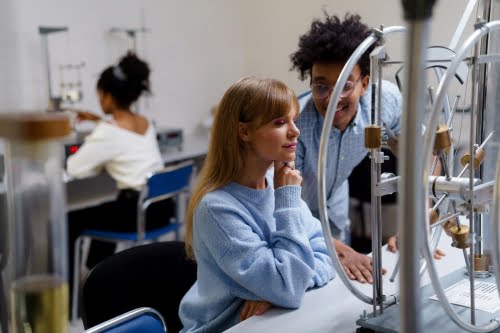Introduction:
Critical thinking is a cornerstone of academic and professional success, enabling individuals to analyze information, evaluate arguments, and make informed decisions. Critical thinking exercises are designed to sharpen cognitive skills, deepen understanding, and foster intellectual curiosity. In this comprehensive article, we will explore the principles of critical thinking, effective exercises for developing critical thinking skills, and practical examples to enhance analytical reasoning and problem-solving abilities.
Understanding Critical Thinking:
1. Definition:
Critical thinking is the process of actively and skillfully conceptualizing, analyzing, synthesizing, and evaluating information to reach reasoned conclusions and make sound decisions. It involves questioning assumptions, examining evidence, and considering alternative perspectives to arrive at well-informed judgments.
Example: When evaluating a persuasive argument, critical thinkers assess the validity of the evidence presented, identify logical fallacies or biases, and weigh the strengths and weaknesses of the argument before forming an opinion.
2. Key Components:
Critical thinking encompasses a range of cognitive skills and dispositions, including:
– Analysis: Breaking down complex ideas or arguments into component parts to understand their structure and underlying assumptions.
– Evaluation: Assessing the credibility, relevance, and logical coherence of information or arguments based on evidence and reasoning.
– Inference: Drawing logical conclusions or making reasonable predictions based on available evidence and logical deductions.
– Problem-solving: Applying analytical reasoning and creative thinking to identify solutions to complex problems or challenges.
Example: In a business context, critical thinkers may analyze market trends, evaluate competitive strategies, infer consumer preferences, and develop innovative solutions to address emerging challenges.
3. Importance:
Critical thinking skills are essential for navigating the complexities of the modern world, including academic pursuits, professional endeavors, and everyday decision-making. They enable individuals to distinguish between fact and opinion, recognize bias and misinformation, and engage in constructive dialogue and debate.
Example: In a rapidly changing technological landscape, critical thinking skills are crucial for evaluating the reliability and ethical implications of emerging technologies such as artificial intelligence, biotechnology, and cryptocurrency.
Effective Critical Thinking Exercises:
1. Analyzing Arguments:
Present students with a written or oral argument and ask them to identify the premises, conclusions, and logical fallacies present in the argument. Encourage students to critically evaluate the evidence and reasoning presented to support the conclusion.
Example: Provide students with an editorial or opinion piece from a newspaper or online publication and ask them to identify the author’s main argument, supporting evidence, and any logical fallacies or rhetorical strategies used to persuade the audience.
2. Case Studies:
Present students with real-world case studies or scenarios that require analytical reasoning and problem-solving skills. Encourage students to analyze the situation, identify key issues, consider alternative courses of action, and propose solutions based on evidence and logic.
Example: Present students with a case study of a business facing a strategic decision, such as entering a new market, launching a new product, or restructuring operations. Ask students to analyze the situation, evaluate the potential risks and benefits, and recommend a course of action supported by reasoned arguments.
3. Socratic Questioning:
Engage students in Socratic questioning, a method of inquiry that encourages critical thinking through a series of probing questions. Encourage students to ask open-ended questions that challenge assumptions, stimulate reflection, and promote deeper understanding.
Example: Facilitate a classroom discussion using Socratic questioning techniques to explore a complex ethical dilemma or controversial issue. Encourage students to consider different perspectives, weigh competing values, and articulate their reasoning behind their opinions.
4. Problem-Based Learning:
Present students with open-ended, real-world problems or challenges that require critical thinking skills to solve. Encourage collaborative problem-solving and provide opportunities for students to apply analytical reasoning, creativity, and teamwork to develop innovative solutions.
Example: Task students with designing a sustainable solution to a pressing environmental problem, such as plastic pollution, climate change, or deforestation. Encourage students to conduct research, analyze data, and propose actionable strategies that address the root causes of the problem.
5. Decision-Making Exercises:
Present students with decision-making scenarios or dilemmas that require careful consideration of competing priorities, risks, and consequences. Encourage students to weigh the potential outcomes, identify ethical considerations, and make informed decisions based on reasoned judgment.
Example: Present students with a scenario in which they must decide between two competing courses of action, each with its own advantages and drawbacks. Encourage students to evaluate the potential impact of each decision on stakeholders, consider ethical implications, and justify their chosen course of action.
Practical Examples of Critical Thinking Exercises:
1. Analyzing News Articles:
Provide students with a selection of news articles from different sources on a current event or topic of interest. Ask students to critically evaluate the credibility of each source, analyze the framing and bias of the articles, and identify any logical fallacies or misinformation present.
Example: Students may analyze news coverage of a political election, comparing and contrasting articles from mainstream media outlets, independent news sources, and social media platforms. Encourage students to assess the reliability of sources, evaluate the evidence presented, and critically evaluate the arguments made by different commentators.
2. Debating Controversial Issues:
Organize a classroom debate or discussion on a controversial topic, such as gun control, climate change, or healthcare reform. Divide students into teams representing different perspectives and encourage them to research, prepare arguments, and engage in respectful dialogue and debate.
Example: Students may debate the pros and cons of implementing a carbon tax to address climate change. Encourage students to conduct research, gather evidence, and construct persuasive arguments based on scientific data, economic analysis, and ethical considerations. Facilitate a structured debate format with opening statements, rebuttals, and closing arguments to promote critical thinking and active engagement.
3. Problem-Solving Challenges:
Present students with real-world problem-solving challenges that require creative thinking and analytical reasoning to solve. Encourage students to work collaboratively in groups to brainstorm solutions, analyze constraints, and develop action plans to address the problem.
Example: Students may participate in a design thinking challenge to create innovative solutions to a community problem, such as homelessness, food insecurity, or urban transportation. Provide students with resources, tools, and guidance to conduct research, ideate potential solutions, and prototype their ideas. Encourage students to test their prototypes, gather feedback, and iterate on their designs to develop viable solutions that address the underlying needs of the community.
Conclusion:
Critical thinking exercises are invaluable tools for developing essential cognitive skills, fostering intellectual curiosity, and empowering individuals to navigate the complexities of the modern world. By engaging in thoughtful analysis, problem-solving, and decision-making activities, students can enhance their analytical reasoning, evaluate evidence, and make informed judgments. Whether analyzing arguments, solving real-world problems, or engaging in ethical debates, critical thinking exercises provide opportunities for students to apply their knowledge, challenge assumptions, and develop the skills needed to succeed in academia, professional careers, and everyday life. Through deliberate practice, reflection, and collaborative inquiry, individuals can cultivate a lifelong habit of critical thinking that enables them to approach challenges with confidence, creativity, and intellectual rigor.











